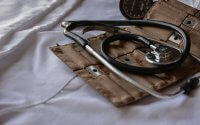Safety Precautions in the Kitchen Catering and Craft Practice SS 1 First Term Lesson Notes Week 8
Catering and Craft Practice SS 1 First Term Lesson Notes Week 8
Subject: Catering and Craft Practice
Class: SS 1
Term: First Term
Week: 8
Age (years): 15-16
Topic: Safety Precautions in the Kitchen
Sub-topics: Meaning of Safety, Types and Causes of Accidents, Prevention and Management of Accidents in the Kitchen
Duration: 1 hour
Behavioural Objectives
By the end of the lesson, students should be able to:
- Define safety and explain its importance in the kitchen.
- Identify types and common causes of accidents in the kitchen.
- Describe ways to prevent accidents in the kitchen.
- Explain procedures for managing accidents when they occur.
Keywords
Safety, accident, prevention, management, kitchen.
Set Induction
Begin by asking students if they have ever encountered an accident in the kitchen or heard of any. Allow them to share their experiences and discuss the potential consequences of kitchen accidents.
Entry Behaviour
Students should have a basic understanding of kitchen activities and the possible risks associated with handling kitchen tools and equipment.
Learning Resources and Materials
- Visual aids showing kitchen hazards
- Handouts on kitchen safety rules
- First aid kit demonstration
Building Background / Connection to Prior Knowledge
Relate the lesson to previous knowledge of catering establishments and the importance of safety in any workspace, especially in the hospitality industry.
Embedded Core Skills
- Communication: Discuss and explain kitchen safety rules and procedures.
- Critical thinking: Assess risks and plan preventive measures.
- Problem-solving: Determine how to manage accidents in the kitchen.
Learning Materials
- Lagos State Scheme of Work
- Textbooks on kitchen safety and hospitality management
Reference Books
- “Kitchen Safety and Management” by D. Green
- Lagos State Scheme of Work for Catering and Craft Practice
Instructional Materials
- Visual aids (charts showing types of kitchen accidents and safety procedures)
- Sample safety signs commonly used in kitchens
- Demonstration of first aid procedures
Content:
- Meaning of Safety
Safety is the state of being protected from potential harm or danger. In a kitchen, safety involves implementing practices that prevent accidents and injuries, ensuring a secure environment for everyone. - Types and Causes of Accidents in the Kitchen
Common types of kitchen accidents include:- Cuts and Lacerations: Often caused by improper handling of knives and sharp objects.
- Burns and Scalds: Results from handling hot surfaces, boiling liquids, or grease splashes.
- Slips and Falls: Caused by wet floors, spills, or misplaced items.
- Electric Shocks: Occurs due to faulty electrical appliances or improper use of water near electric equipment.
- Poisoning: From consuming spoiled food or improper handling of cleaning chemicals.
Causes:
- Carelessness or distraction.
- Lack of knowledge or skill in handling equipment.
- Poor kitchen organization.
- Unsafe use of cleaning chemicals.
- Prevention of Accidents in the Kitchen
Preventive measures to ensure safety in the kitchen include:- Proper Knife Handling: Use knives carefully and store them safely.
- Use of Protective Gear: Wear aprons, oven mitts, and gloves as needed.
- Good Housekeeping: Clean up spills immediately and keep floors dry.
- Safe Storage of Chemicals: Store cleaning agents away from food items.
- Electrical Safety: Avoid using electrical devices near water, and regularly inspect appliances.
- Management of Accidents in the Kitchen
- First Aid for Cuts: Clean the cut, apply pressure to stop bleeding, and use antiseptic before dressing the wound.
- Treatment for Burns and Scalds: Cool the burn under running water, cover it with a sterile bandage, and avoid using ice.
- Dealing with Slips and Falls: Assist the person up, check for injuries, and seek medical help if needed.
- Handling Electric Shocks: Turn off the power source, avoid touching the person directly, and call for medical assistance if necessary.
- Poisoning: Seek immediate medical help and provide details of the substance ingested if possible.
Evaluation:
Fill-in-the-Blank Questions:
- The state of being protected from harm is known as _____. (a) Safety, (b) Hazard, (c) Danger, (d) Risk)
- Burns in the kitchen are often caused by handling _____ surfaces. (a) Cold, (b) Hot, (c) Wet, (d) Sharp)
- The risk of electric shock can be minimized by avoiding _____ near electrical appliances. (a) Food, (b) Water, (c) Oil, (d) Fire)
- A common cause of cuts in the kitchen is improper handling of _____. (a) Knives, (b) Bowls, (c) Spoons, (d) Plates)
- First aid treatment for a cut includes cleaning and applying _____. (a) Ice, (b) Bandage, (c) Water, (d) Soap)
- Poisoning in the kitchen can occur from improper handling of _____. (a) Food, (b) Cleaning chemicals, (c) Water, (d) Utensils)
- A spill on the floor should be cleaned up immediately to prevent _____. (a) Poisoning, (b) Falls, (c) Cuts, (d) Burns)
- Before treating an electric shock, always turn off the _____. (a) Water, (b) Light, (c) Power source, (d) Stove)
- Wearing oven mitts helps prevent _____. (a) Falls, (b) Cuts, (c) Burns, (d) Electric shocks)
- Using knives properly and storing them safely prevents _____. (a) Burns, (b) Cuts, (c) Slips, (d) Poisoning)
- Keeping floors dry helps avoid _____. (a) Burns, (b) Slips, (c) Cuts, (d) Shocks)
- Scalds often occur from contact with _____. (a) Cold water, (b) Hot liquids, (c) Flour, (d) Sugar)
- Poor kitchen organization is a common cause of _____. (a) Accidents, (b) Cooking success, (c) Cleanliness, (d) Tidiness)
- To prevent accidents, always store cleaning chemicals away from _____. (a) Cabinets, (b) Food, (c) Doors, (d) Floors)
- Safety in the kitchen is crucial to avoid _____. (a) Happiness, (b) Accidents, (c) Cleanliness, (d) Friendliness)
Class Activity Discussion:
FAQs with Answers:
- What does safety mean in the kitchen?
Safety means being protected from harm or danger. - Why is kitchen safety important?
It helps prevent accidents and injuries. - What is the main cause of cuts in the kitchen?
Improper handling of sharp objects, like knives. - How can burns be prevented?
By handling hot items with care and using oven mitts. - What is the first step in managing a cut?
Clean the cut and apply pressure to stop bleeding. - How can electric shocks be avoided in the kitchen?
Keep electrical devices away from water. - What should be done in case of a spill?
Clean it up immediately to prevent slipping. - Why is it important to store chemicals away from food?
To prevent poisoning. - What safety gear can be used in the kitchen?
Aprons, gloves, and oven mitts. - What should you do if someone gets a burn?
Cool the burn under running water and cover with a sterile bandage. - What causes slips in the kitchen?
Wet floors or misplaced items. - What is the importance of good housekeeping in the kitchen?
It helps prevent accidents by keeping the area clean and organized. - What does ‘first aid’ mean?
Immediate care given to someone who is injured. - How can poisoning be managed in the kitchen?
Seek medical help and avoid ingestion of harmful substances. - Why should knives be stored safely?
To avoid accidental cuts.
Presentation:
Step 1: Teacher revises previous topics on kitchen setup and organization.
Step 2: Teacher introduces the new topic on kitchen safety and discusses various types of accidents.
Step 3: Students share their experiences with kitchen safety, and the teacher provides corrections and guidance.
Activities:
Teacher’s Activities:
- Explain the importance of kitchen safety and types of accidents.
- Demonstrate safe practices and how to handle minor accidents.
- Provide scenarios and guide students in identifying safe responses.
Learner’s Activities:
- Participate in discussions and share personal experiences.
- Engage in the demonstration of first aid techniques.
- Answer evaluation questions in groups and give feedback.
Assessment:
Evaluation Questions:
- Define safety in the kitchen.
- List two types of accidents that can occur in the kitchen.
- Describe a preventive measure for slips.
- What is the first step in treating a burn?
- Why should cleaning chemicals be stored away from food?
- Explain the term “first aid.”
- Describe one way to avoid electric shock in the kitchen.
- How do you manage a cut in the kitchen?
- What safety gear is recommended for handling hot items?
- Why is good housekeeping important in preventing accidents?
Conclusion
The teacher goes around to mark and evaluate the students’ understanding of kitchen safety measures, providing necessary corrections where needed.
Related
Related posts:
- Catering and Craft Practice Scheme of Work for Senior Secondary Schools 1 Catering and Craft Practice SS 1 First Term Lesson Notes
- Understanding the Functions and Ratings of Catering Establishments Catering and Craft Practice SS 1 First Term Lesson Notes Week 5
- Culinary Terms Commonly Used in Catering; Glossary of Culinary Terms; Compilation of Menu in French Catering and Craft Practice SS 1 First Term Lesson Notes 6
- Mid Term Test Catering and Craft Practice SS 1 First Term Lesson Notes Week 7
- Meaning of First Aid, First Aider, First Aid Box, Fire Control, and Fire Lighting Equipment Catering and Craft Practice SS 1 First Term Lesson Notes Week 9
Related Posts

PRINCIPLES AND PRACTICE OF DOUBLE ENTRY

LITERARY TERMS AND DEFINITION

Understanding Calories and the Power of an Adequate Diet
About The Author
Edu Delight Tutors
Am a dedicated educator with a passion for learning and a keen interest in technology. I believe that technology can revolutionize education and am committed to creating an online hub of knowledge, inspiration, and growth for both educators and students. Welcome to Edu Delight Tutors, where learning knows no boundaries.